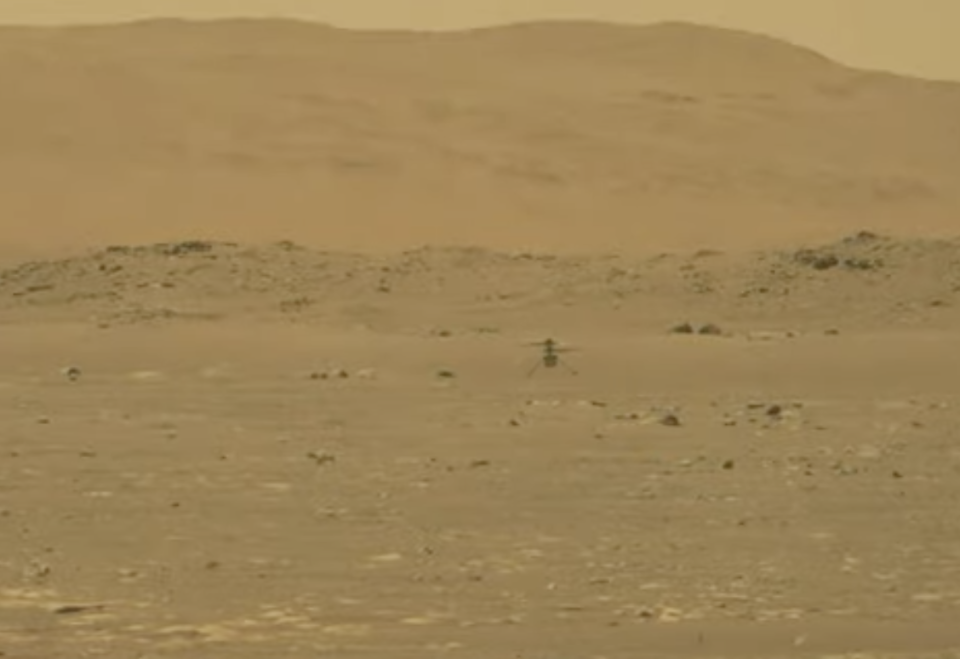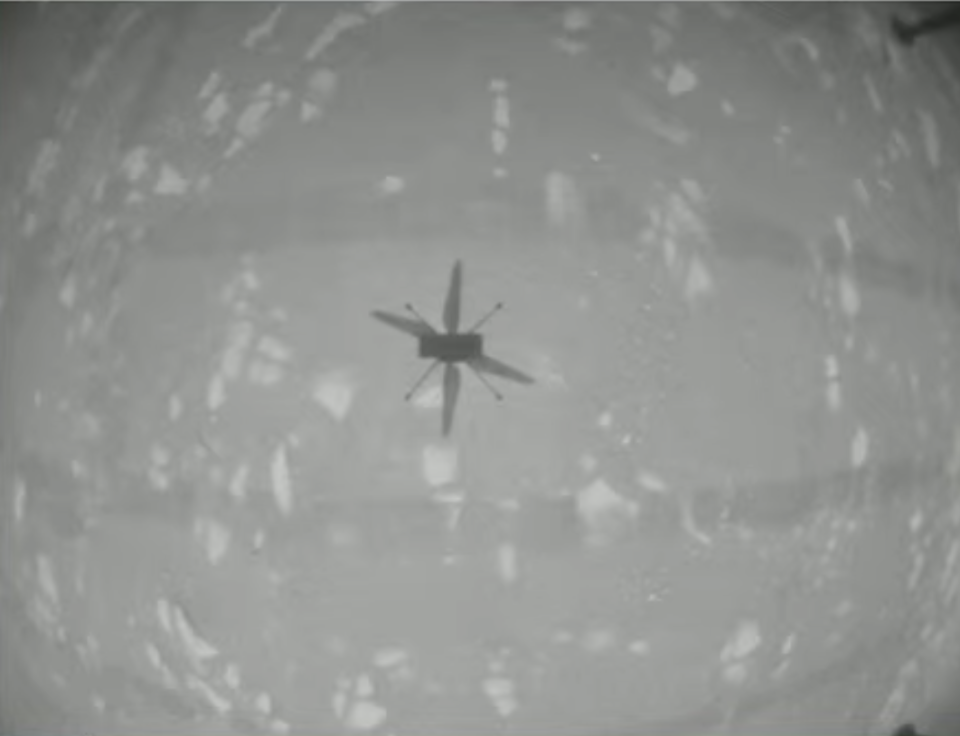Nasa Mars helicopter flight: Ingenuity makes first ever powered flight on another planet, space agency announces

Nasa’s Mars helicopter Ingenuity has completed the first ever controlled and powered flight on another planet.
Data sent from the Martian surface by the helicopter showed that it had flown up into the air, hovered for 30 seconds, before touching down again safely.
It makes history as the first time a rotorcraft has flown on another planet, and the first time a spacecraft has conducted a controlled flight of any kind.
But it also marks the beginning of a “month of Ingenuity”, in which the space agency will look to fly further and for longer across the surface.
Images sent from the Ingenuity’s navigation camera, mounted on the bottom of the craft, showed its shadow as it flew over the surface.

The Perseverance rover – which carried Ingenuity to Mars, and served as the relay to send data back to its engineers – also took that showed the helicopter taking off.
You wouldn’t believe what I just saw.
More images and video to come...#MarsHelicopterhttps://t.co/PLapgbHeZU pic.twitter.com/mbiOGx4tJZ— NASA's Perseverance Mars Rover (@NASAPersevere) April 19, 2021
“We can now say that human beings have flown a rotorcraft on another planet,” project manager MiMi Aung told her team soon after data showed that the helicopter had been successful. She noted that she was unable to celebrate properly with the many people involved in the mission, because many of them were working from home and even those in the room were unable to hug each other.
Ingenuity is not carrying any scientific instruments, and is not intended as a research mission. Instead, it is a test of technology that could go on to power the craft of the future.
To accomplish all that, the helicopter’s twin, counter-rotating rotor blades needed to spin at 2,500 revolutions per minute – five times faster than on Earth.
With an atmosphere less than 1 per cent the pressure of Earth’s, engineers had to build a helicopter light enough – with blades spinning fast enough – to generate this otherworldy lift.
At the same time, it had to be sturdy enough to withstand the Martian wind and extreme cold. More than six years in the making, Ingenuity is a barebones 0.5 metres tall, a spindly four-legged chopper. Its fuselage, containing all the batteries, heaters and sensors, is the size of a tissue box.
The carbon fibre, foam-filled rotors are the biggest pieces: Each pair stretches 4 feet (1.2 metres) tip to tip. The helicopter is topped with a solar panel for recharging the batteries, crucial for its survival during the -90 degrees Celsius Martian nights.
Nasa chose a flat, relatively rock-free patch for Ingenuity’s airfield, measuring 10 metres by 10 metres. It turned out to be less than 30 metres from the original landing site in Jezero Crater.
The helicopter was released from the rover onto the airfield on 3 April. Flight commands were sent Sunday, after controllers sent up a software correction for the rotor blade spin-up.
The little chopper with a giant job attracted attention from around the world, from the moment it launched with Perseverance last July until now.
Even Arnold Schwarzenegger joined in the fun, rooting for Ingenuity over the weekend via Twitter. “Get to the chopper!” he shouted, re-enacting a line from his 1987 sci-fi film “Predator”.
Up to five helicopter flights are planned, each one increasingly ambitious. If successful, the demo could lead the way to a fleet of Martian drones in decades to come, providing aerial views, transporting packages and serving as scouts for astronauts. High-altitude helicopters here on Earth could also benefit – imagine choppers easily navigating the Himalayas.
Ingenuity’s team has until the beginning of May to complete the test flights. That’s because the rover needs to get on with its main mission: collecting rock samples that could hold evidence of past Martian life, for return to Earth a decade from now.
Until then, Perseverance will keep watch over Ingenuity. Flight engineers affectionately call them Percy and Ginny. “Big sister’s watching,” said Malin Space Science Systems’ Elsa Jensen, the rover’s lead camera operator.
Additional reporting by Associated Press
Read More
Mesmerising light twists around two black holes
Nasa Ingenuity helicopter lift-off live news and latest updates

 Yahoo Finance
Yahoo Finance 